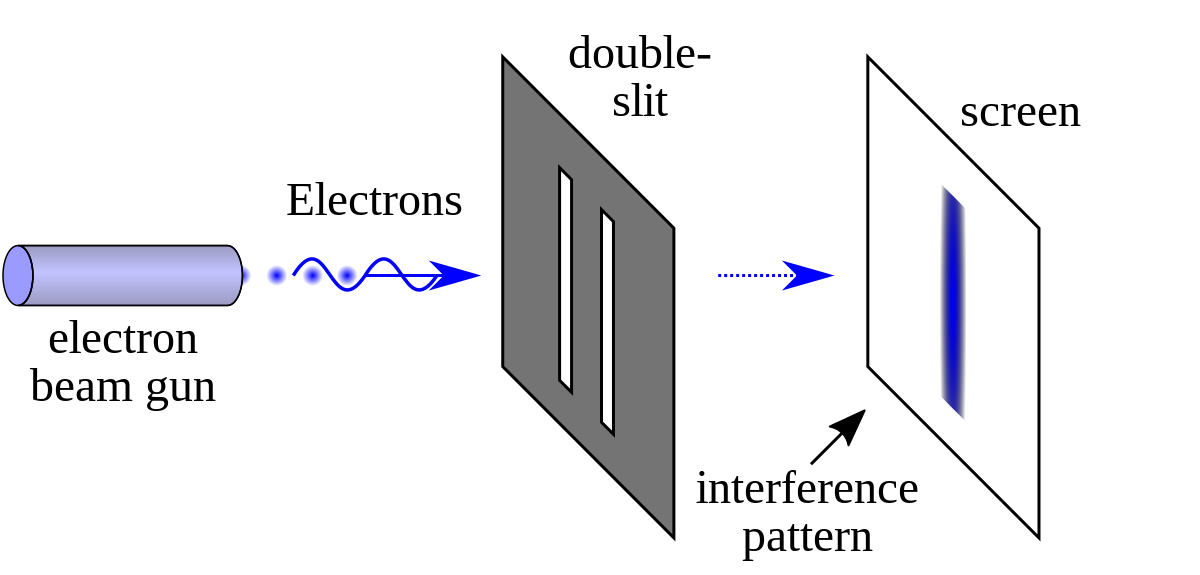Double-slit experiment, pseudoscience, physics
Hello friend,
“So Vishal, explain the double-slit experiment. How does it work? Why is it so fascinating to you?“
Professor Chaubey asked me after hearing me rant for 2 minutes about some self-help book I had read.
It was the peak winter of December 2016 in Delhi.
I was interviewing for my dream course in liberal arts for the second time that year.
I had already failed in my first attempt earlier that year in January. The feedback that I had gotten at that time was I was trying to give answers I thought interviewers wanted to listen to instead of the answers true to myself.
Committed to not repeat the same mistake, I decided to stay true to myself.
The conversation somehow came to quantum mechanics and the famous “double slit experiment”.
Despite studying physics in high school and then during engineering, I had only developed an interest in quantum mechanics because of a somewhat cringy, self-help, non-scientific book called “Why Quantum Physicists Do Not Fail?”.
Yes, that is a real book. There is another book by the same author called “Why Quantum Physicists Do Not Get Fat”.
Please don’t judge me. I read cringy stuff at times. I just don’t talk about them in public.
But anyway, I digress.
The reason the double slit experiment fascinated me was because it sounded very mystical and radical.
Here is a quick summary of it:
Imagine an electron/photon gun on one end, a barrier with two slits, and a wall/screen on the other end.
 |
The scientists shoot a tiny particle (like light (photon) or electron) at the barrier and the screen behind it shows where it lands. At first, one slit was closed. Then, as expected, the particle passes through the other slit and makes a single band on the screen. However, when both slits are open, instead of two bands, they get a stripey pattern.
It’s as if the particle acted as a wave this time and went through both slits at once and mixed together, like ripples in a pond.
And here’s the weird part: when scientists tried to peek to see which slit a particle went through, the stripey pattern disappeared and they got bands again.
Just by watching, they changed the result.
This experiment shows that tiny particles behave in mysterious ways and just observing them can change how they act.
The act of observation that shifts reality forms the basis of many pseudo-scientific theories on self-help.
The idea is that every time we observe and become aware of our choices, we split reality into different paths. And all these different paths or versions exist in many worlds (or parallel universes) that don’t interact with each other but still exist on their own.
This is also in line with the idea of ‘Maya’ or the concept of “life as an illusion” in many spiritual teachings.
I still can’t believe that I might have mentioned this pseudo-scientific bs in the interview with utmost passion and energy. I think it is bs because the experiment is applicable to the quantum, microscopic world and not the macroscopic world and complex systems.
Nevertheless, I still cracked that interview because I explained the experiment accurately and other things I might have got right.
I remembered this incident this week because of another book I read last weekend, this time by a respected theoretical physicist, named Carlo Rovelli.
Book of the week: Seven Brief Lessons on Physics by Carlo Rovelli
It is an incredible read about the most fascinating aspects of the great revolution that occurred in physics in the twentieth and twenty-first centuries.
Even if you know little or nothing about modern science, you can still read and understand 90% of the book fairly easily.
Rovelli takes you on a fascinating journey that starts from the two most popular yet still incompatible theories of the 20th century — general relativity and quantum mechanics. He then explains the architecture of the cosmos through simple illustrations and goes into loop quantum gravity that attempts to synthesize the two popular theories of the 20th century. The sixth lesson talks about probability and the heat of black holes.
But, my favorite section was the last lesson where he talks about our existence in the light of the strange world described by physics. The way he writes and makes sense of our existence is poetic and beautiful.
We are made of the same stardust of which all things are made, and when we are immersed in suffering or when we are experiencing intense joy, we are being nothing other than what we can’t help but be: a part of our world.
Lucretius expresses this, wonderfully: . . .
we are all born from the same celestial seed;
all of us have the same father,
from which the earth,
the mother who feeds us,
receives clear drops of rain,
producing from them bright wheat and lush trees,
and the human race,
and the species of beasts,
offering up the foods with which all bodies are nourished,
to lead a sweet life
and generate offspring . . . (De rerum natura, bk. II, lines 991– 97)
As I finished reading this book Sunday night ruminating on the above passage, I felt something within me shifted.
My issues seemed trivial, at least at that moment.
For the tiniest fraction of a second, I could appreciate my insignificance in the context of the cosmos and marvel at the fact that I was aware.
Just simply aware.
Of that moment.
Of the universe.
Of everything.
It is another matter that the next day, the same old, existential blues were back. 😀
Anyway, that is all from me this week, folks!
Until next time,
Love,
Vishal
If you liked reading this newsletter, sign up to get them straight into your inbox, every Wednesday!
Most Popular Newsletter Editions
Popular posts:
- Vishal’s Newsletter-🥳1 Year Anniversary Special🎆 3 ideas that helped me write consistently for 52 weeks